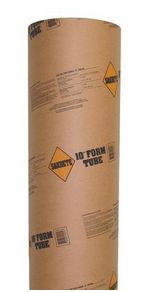Engineering an Open Pavilion
Professional Engineer KEN in AIRVILLE writes:
“Working on engineering a post frame equipment open pavilion 28×48. Only has 2 posts on the front wall and big ass flat girder for a header. See attached plans. I have done them all different ways before I a structural engineer who grew up at my father’s sawmill and been in the engineering and framing for 30+ years. Been reading your blogs especially all the info on knee braces. I agree the skin gives you 90% of lateral capacity over embedded posts or knee braces. But that is pretty much all we have to use on an open structure. I didn’t really want to use buried posts for longevity but may be best for lateral capacity. I only have 2 columns in the front holding the roof up so I wanted to come out of the ground with a big ole concrete pier in case it ever got impacted. Would love to discuss post frame design theory with you. One of your guys used to be a truss designer also I read somewhere. I know that industry very well been in it my entire life. Have a great day.”
Mike the Pole Barn says:
Thank you for reaching out and for forwarding your draft plans.
I was in ownership or management of prefabricated wood truss facilities for over two decades, in my “past” life.
 Unless there is some strong objection, embedded columns are probably going to provide your best design solution, as well as being easiest to construct. You will want to specify UC-4B for treatment, as this should assure a lifespan greater than our grandchildren’s grandchildren.
Unless there is some strong objection, embedded columns are probably going to provide your best design solution, as well as being easiest to construct. You will want to specify UC-4B for treatment, as this should assure a lifespan greater than our grandchildren’s grandchildren.
If bracket mounts end up being your solution, look at using Sturdi-wall Plus brackets, as they have a far greater moment resisting capacity than do Simpson products and have an ICC-ESR approval.
I would look at placing low side columns every 12′, using a pair of trusses ganged together and notched into columns, with 2x purlins recessed between top chords, in Simpson hangers.
On high side, parallel chord flat trusses could be used for your ‘beam’, also notched into columns. Mono truss top chords could be run across top of trussed beam and look at making connection between mono trusses and beam a fairly stiff one.
Explore using full length treated glu-lam columns, without knee braces. Your knee bracing challenge is two-fold – you have to deal with forces being put into trusses by knee brace and toughest – coming up with a connection adequate to be able to transfer those forces. Your column sizes will be dictated by L/d ratio, so even if your knee braces were to work in the direction of truss span, you still have slenderness in length of building. It looks to me like a 6 ply 2×8 glulam from Rigidply (7″ x 8-1/16″) should be capable in both directions.
In order to not void roof steel paint warranty, look at a roof slope of 3/12 with an Integral Condensation Control factory applied to prevent condensation drippage.
The NFBA has available a Non-Diaphragm Design Guide (https://www.nfba.org/aws/NFBA/pt/sd/product/14888/_PARENT/layout_details/false), it may prove helpful for this project.
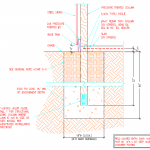 DEAR RALPH: In a typical fully engineered post frame (pole) building isolated columns embedded into your ground would be complying and meet Building Code requirements. We would like to see your jurisdiction’s written requirement for mandating a continuous foundation, as often times these ‘requirements’ are just one person’s own feelings of how things should be done, rather than having an actual basis.
DEAR RALPH: In a typical fully engineered post frame (pole) building isolated columns embedded into your ground would be complying and meet Building Code requirements. We would like to see your jurisdiction’s written requirement for mandating a continuous foundation, as often times these ‘requirements’ are just one person’s own feelings of how things should be done, rather than having an actual basis.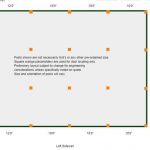 DEAR BRIAN: Regardless of spacing of columns or trusses, a fully engineered post frame building will be designed to meet or exceed a specified set of wind design criteria – speed and exposure. You are better served to increase design wind sped, so your entire buildings is capable of supporting higher loads, than to merely move columns closer together. Provided Code required deflection limitations have been properly engineered for, any purlin sag, over time, should be relatively imperceptible.
DEAR BRIAN: Regardless of spacing of columns or trusses, a fully engineered post frame building will be designed to meet or exceed a specified set of wind design criteria – speed and exposure. You are better served to increase design wind sped, so your entire buildings is capable of supporting higher loads, than to merely move columns closer together. Provided Code required deflection limitations have been properly engineered for, any purlin sag, over time, should be relatively imperceptible.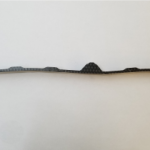 DEAR SHERRY: Properly manufactured inside closure strips are UV resistant and should outlive your building’s steel roofing. Personally, I find them essential, as without them small flying critters have a clear path to enter your building. In order to replace them, you will have to remove screws along your eave line. Once remains of old closures are removed, new ones can be put in place. Old screws should be replaced by both larger diameter and longer screws, to maintain integrity of connections and prevent leaks.
DEAR SHERRY: Properly manufactured inside closure strips are UV resistant and should outlive your building’s steel roofing. Personally, I find them essential, as without them small flying critters have a clear path to enter your building. In order to replace them, you will have to remove screws along your eave line. Once remains of old closures are removed, new ones can be put in place. Old screws should be replaced by both larger diameter and longer screws, to maintain integrity of connections and prevent leaks.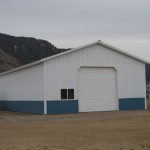 DEAR BRIAN: Done right, this is going to take someone who can visit your site and do an analysis of the situation. Your best bet is going to be to contact a local to you overhead door installation company. The main concern would be how much room you have to go “up” for a taller door. You’ll need the proposed door height, plus about 15″ from the floor.
DEAR BRIAN: Done right, this is going to take someone who can visit your site and do an analysis of the situation. Your best bet is going to be to contact a local to you overhead door installation company. The main concern would be how much room you have to go “up” for a taller door. You’ll need the proposed door height, plus about 15″ from the floor. 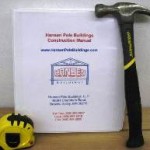 DEAR JEAN PAUL: Every Hansen Pole Building kit package comes with not only a two complete sets of engineer sealed site and client specific 24” x 36” building plans, but also our industry leading Construction Manual. Some example plans can be viewed here:
DEAR JEAN PAUL: Every Hansen Pole Building kit package comes with not only a two complete sets of engineer sealed site and client specific 24” x 36” building plans, but also our industry leading Construction Manual. Some example plans can be viewed here:  My personal preference is the low tech, lowest cost version – properly pressure preservative treated columns embedded in the ground.
My personal preference is the low tech, lowest cost version – properly pressure preservative treated columns embedded in the ground.